Common Grass Pink, Bearded Pink, Swamp Pink, Tuberous Grass Pink, Meadow Gift - Calopogon tuberosus
|
Calopogon tuberosus - Common Grass Pink, Bearded Pink, Swamp Pink, Tuberous Grass Pink, Meadow Gift. Calopogon - Grass Pink - is a genus of 5 species, all native only to eastern North America, including the United States, Canada, Cuba, and The Bahamas. Calopogon tuberosus is the most widely distributed species in the genus, and is found in peat bogs, wet meadows, and other open wet areas in the eastern US and southeastern Canada. Due to its relatively wide distribution, one of its common names is Common Grass Pink. The common name Tuberous Grass Pink as well as its species epithet is based on the shape of its corm.
Found in:
AL, AR, CT, DC, DE, FL, GA, IA, IL, IN, KS, KY, LA, MA, MD, ME, MI, MN, MO, MS, NC, NH, NJ, NY, OH, OK, PA, RI, SC, TN, TX, VA, VT, WI, WV
Leave comments on Calopogon tuberosus at this link. | 
Distribution of Calopogon tuberosus in the United States and Canada:
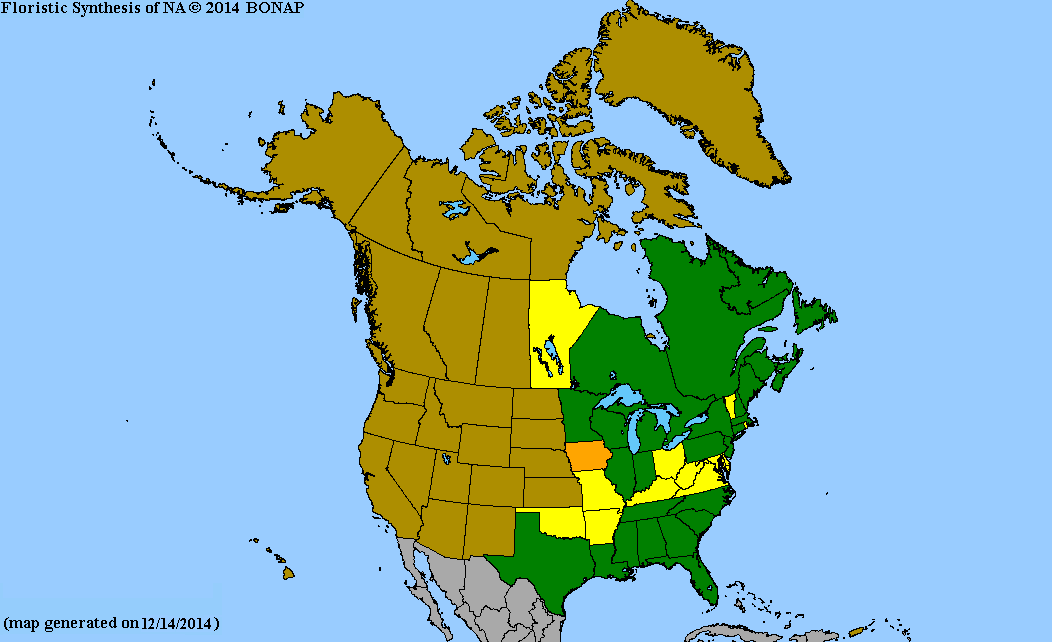
Map courtesy of The Biota of North America Program.
Map color key
Search Our Database: Enter any portion of the Scientific, Common Name, or both.
Do a general Google search of the entire site:
#ad
 Follow USWildflowers on Twitter
| | Site: AEDC, Coffee County, TN Date: 2016-June-08 | Photographer: Gerald C. Williamson
Nikon D7000
Tamron SP 90MM f/2.8 AF Macro | | The beautiful flower of Grass Pink is about 1.5 inches wide. The petals and sepals are usually a shade of pink, but may occasionally be entirely white. There may be as many as 25 flowers on a plant, although they would unlikely be open all at the same time. My interpretation of this photo is that (at least) three flowers have already bloomed and gone, based on the bare bracts, two flowers are open, one is about to open, and two more are a couple of days away. The plant starts blooming in November in Florida, and on into August in the northern parts of its range. The northern plants are frequently smaller than the southern plants; these smaller plants were formerly considered a separate variety (var. latifolia) but studies have shown them to properly belong in var. tuberosus. While Calopogon tuberosus normally grows to about 18 inches tall, it can grow as tall as 4 feet. | | 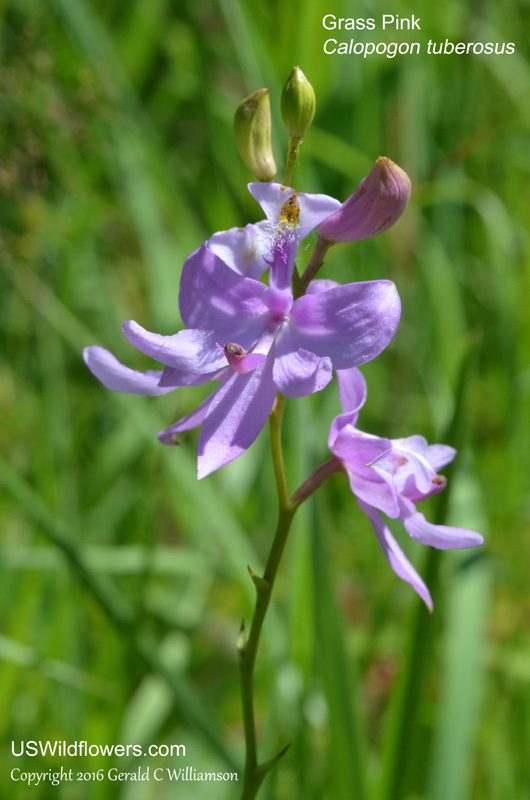
| | Site: AEDC, Coffee County, TN Date: 2017-May-24 | Photographer: Gerald C Williamson
Nikon D7000
Tamron SP 90MM f/2.8 AF Macro | | The genus name Calopogon is from the Greek words for beautiful (kalos) beard (pogon), referring to the hairlike protuberances on the upper lip. These hairs apparently assist in pollination by tricking bees into thinking they are pollen-laden anthers. The bees land on the lip and their weight causes the lip to drop and the bee to fall into the column with the anthers and stigma, pollinating the plant with pollen from other plants, and transferring pollen to the bee for transport to other plants. | | Click on the photo for a larger image
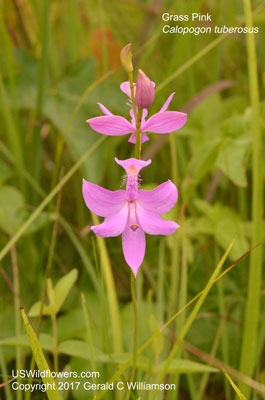
| | Site: AEDC, Coffee County, TN Date: 2016-June-08 | Photographer: Gerald C Williamson
Nikon D7000 | | There may be as many as 25 flowers on a plant. | | Click on the photo for a larger image
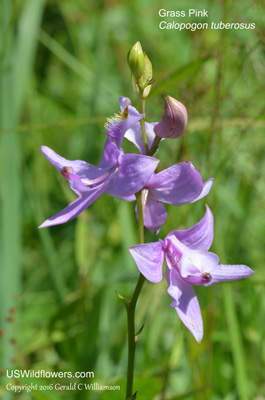
| | Site: AEDC, Coffee County, TN Date: 2016-June-08 | Photographer: Gerald C Williamson
Nikon D7000 | | Calopogon tuberosus has 1 or 2 sessile leaves that may be up to 20 inches long. They are distinctly ribbed. Those of the widely distributed variety tuberosus are slightly curled lengthwise, while those of the variety found only in south Florida - var. simpsonii - are strongly curled lengthwise. | | Click on the photo for a larger image
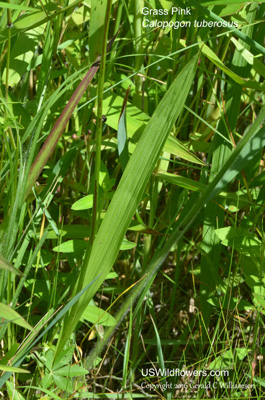
|
References used for identification and information:
|
|
| |
| #ad
|
|






